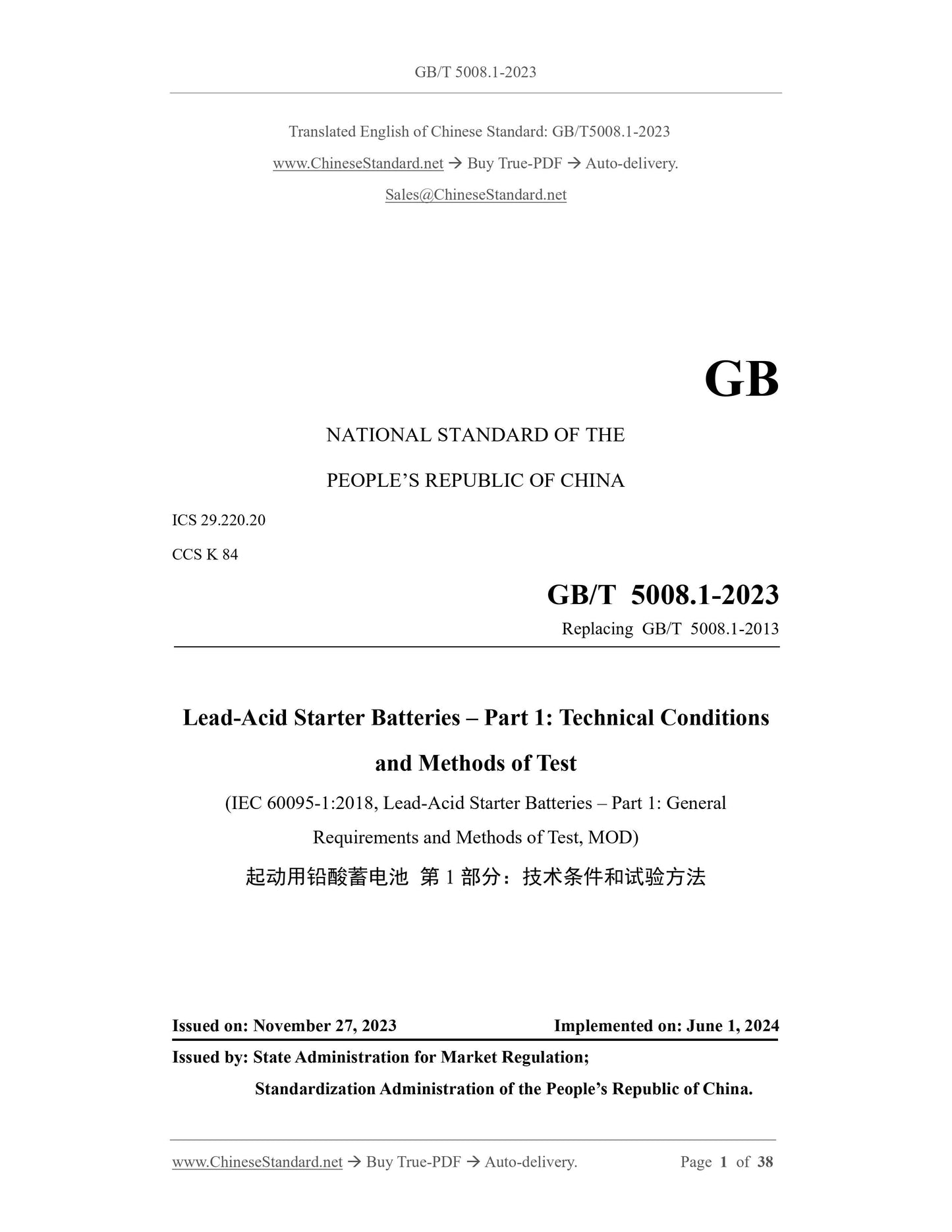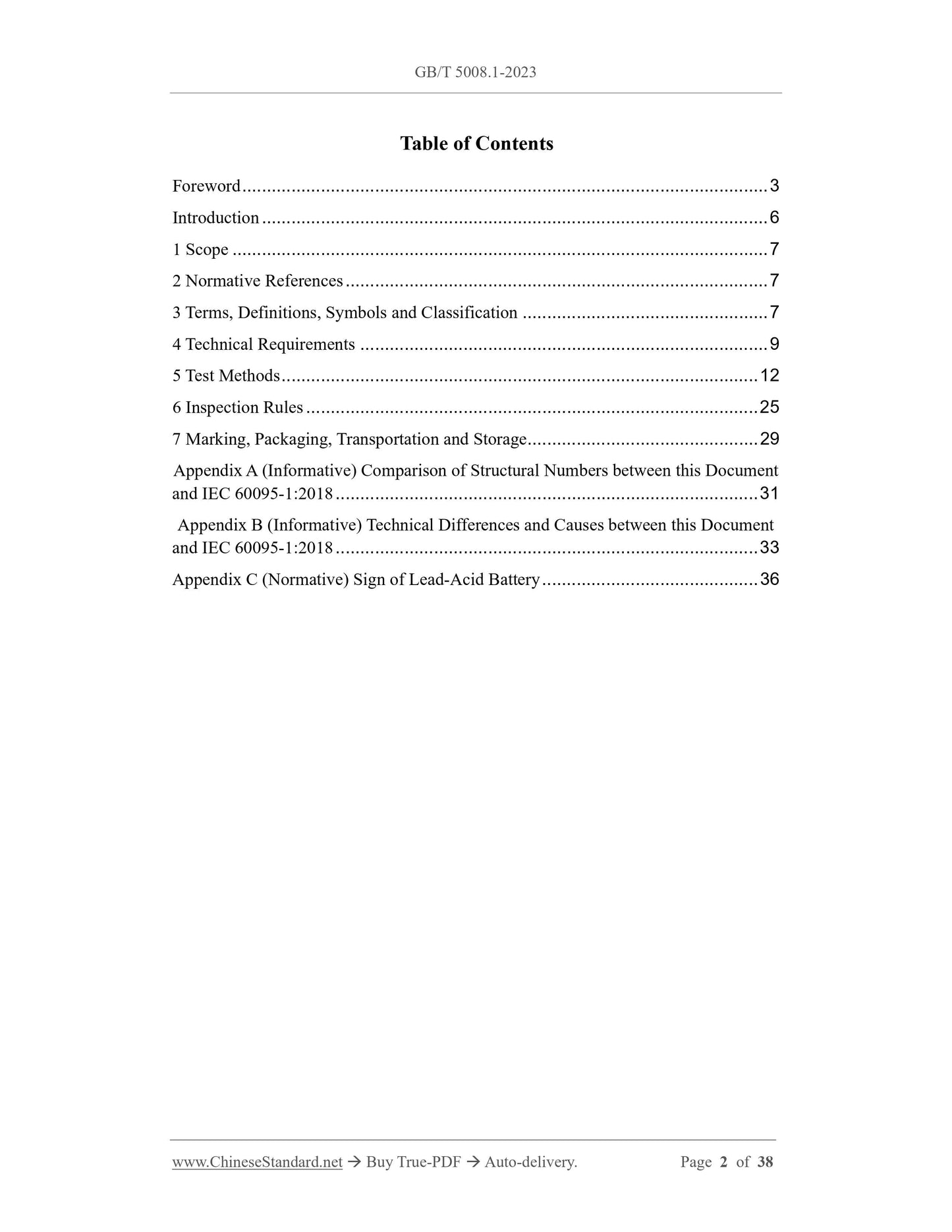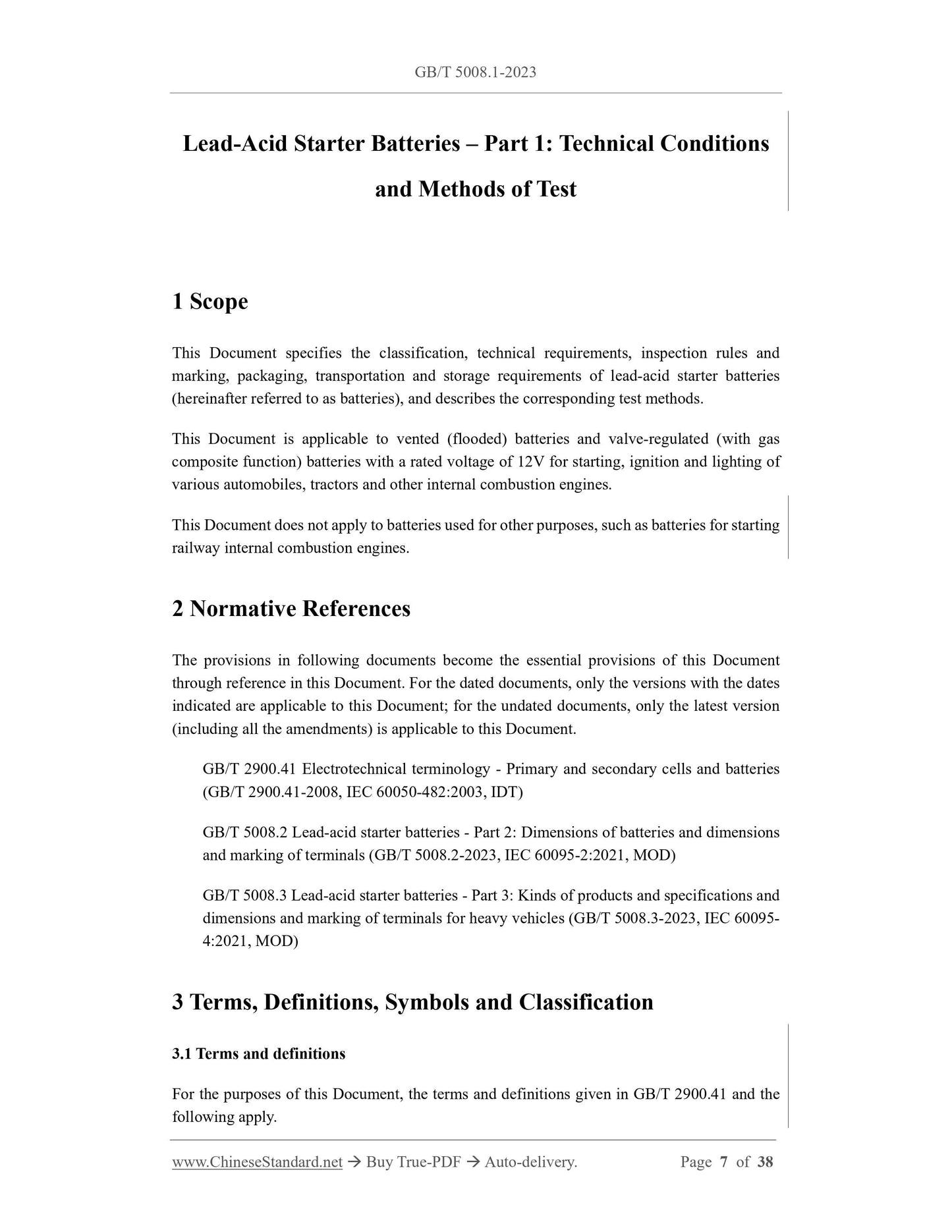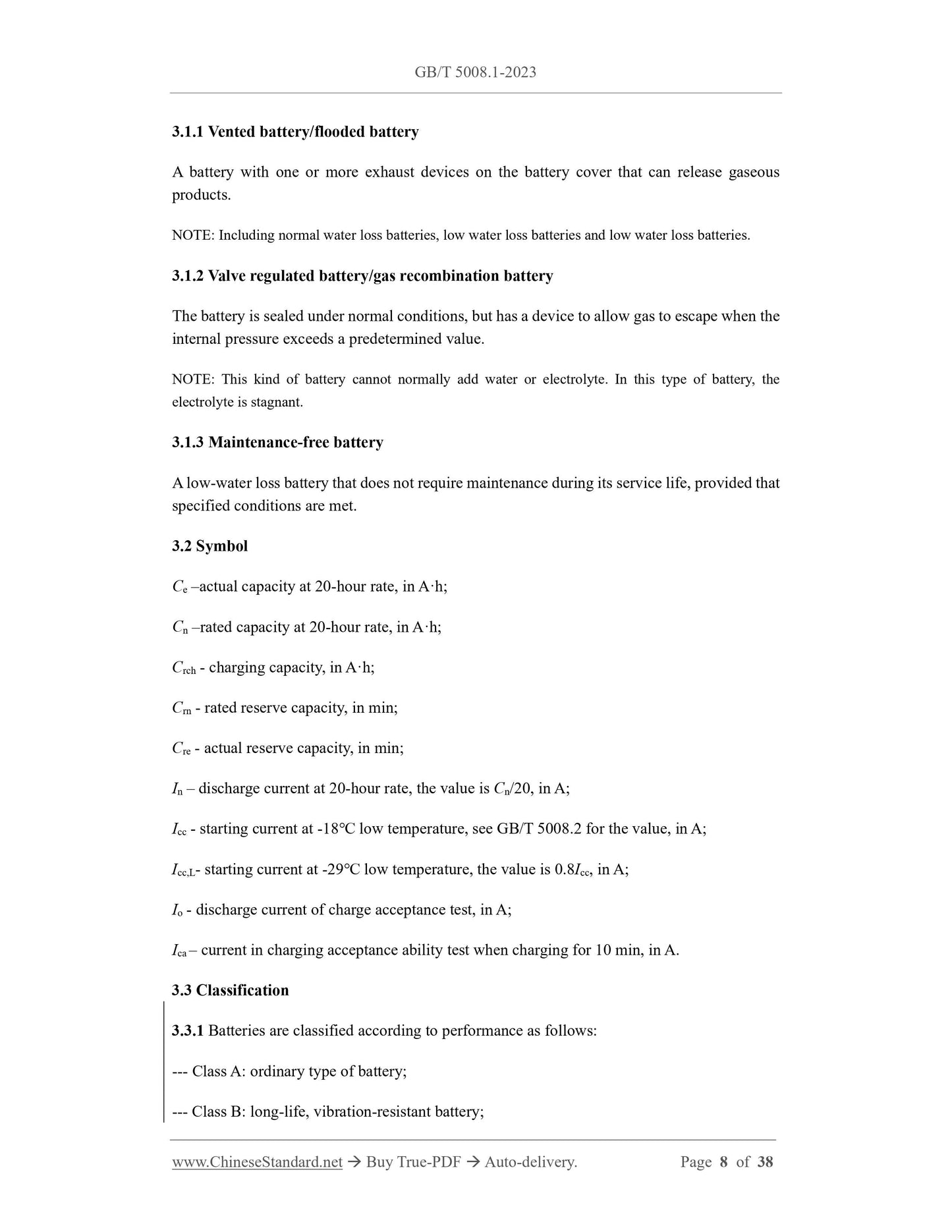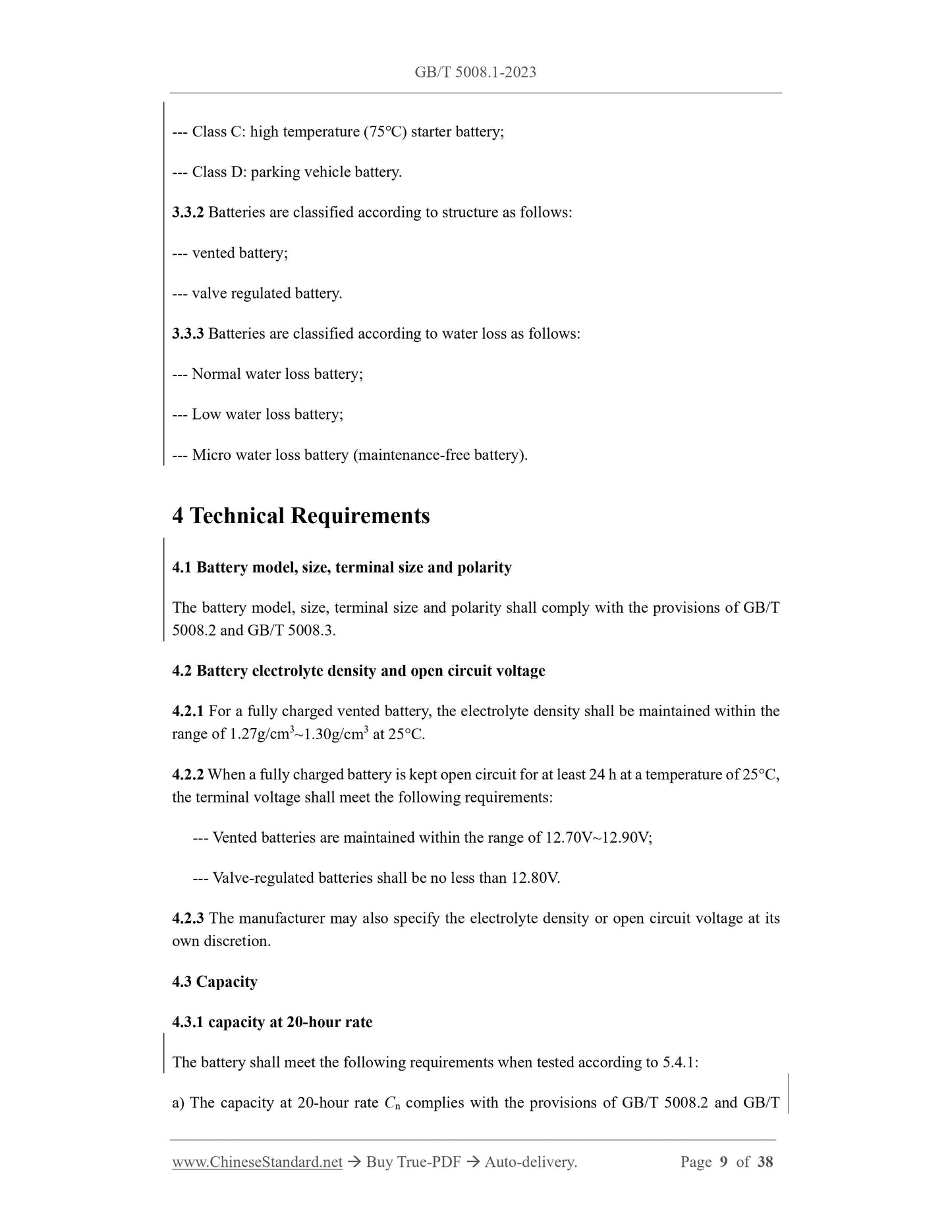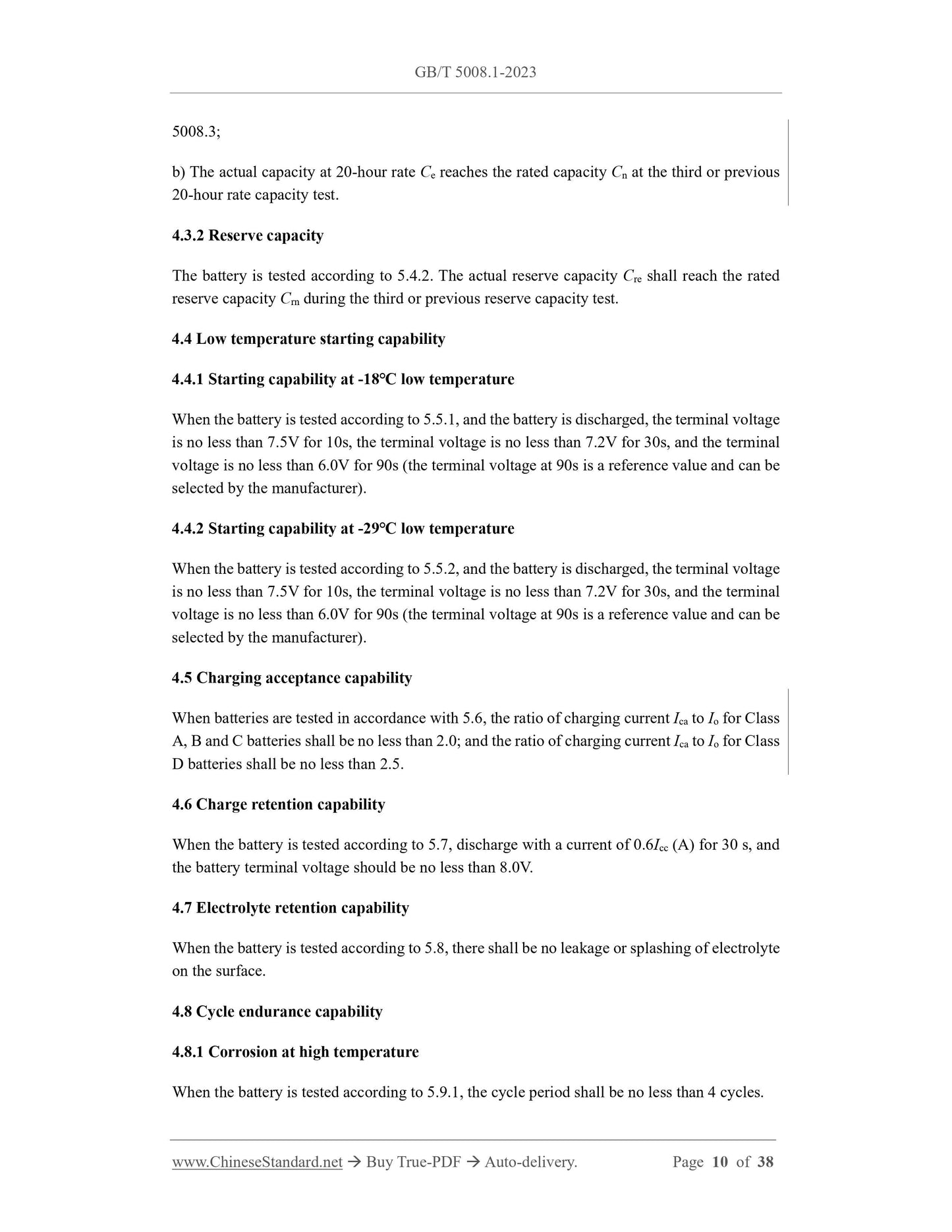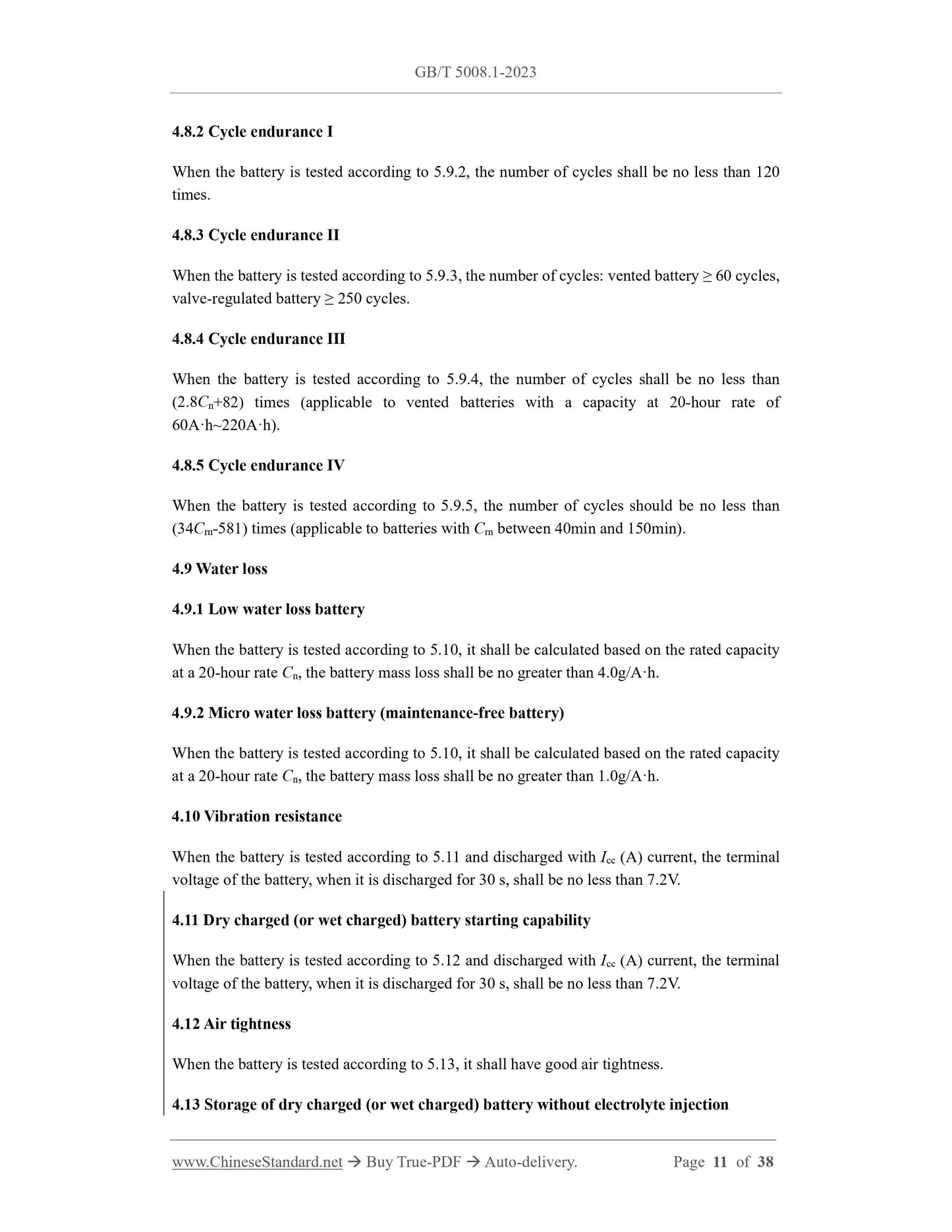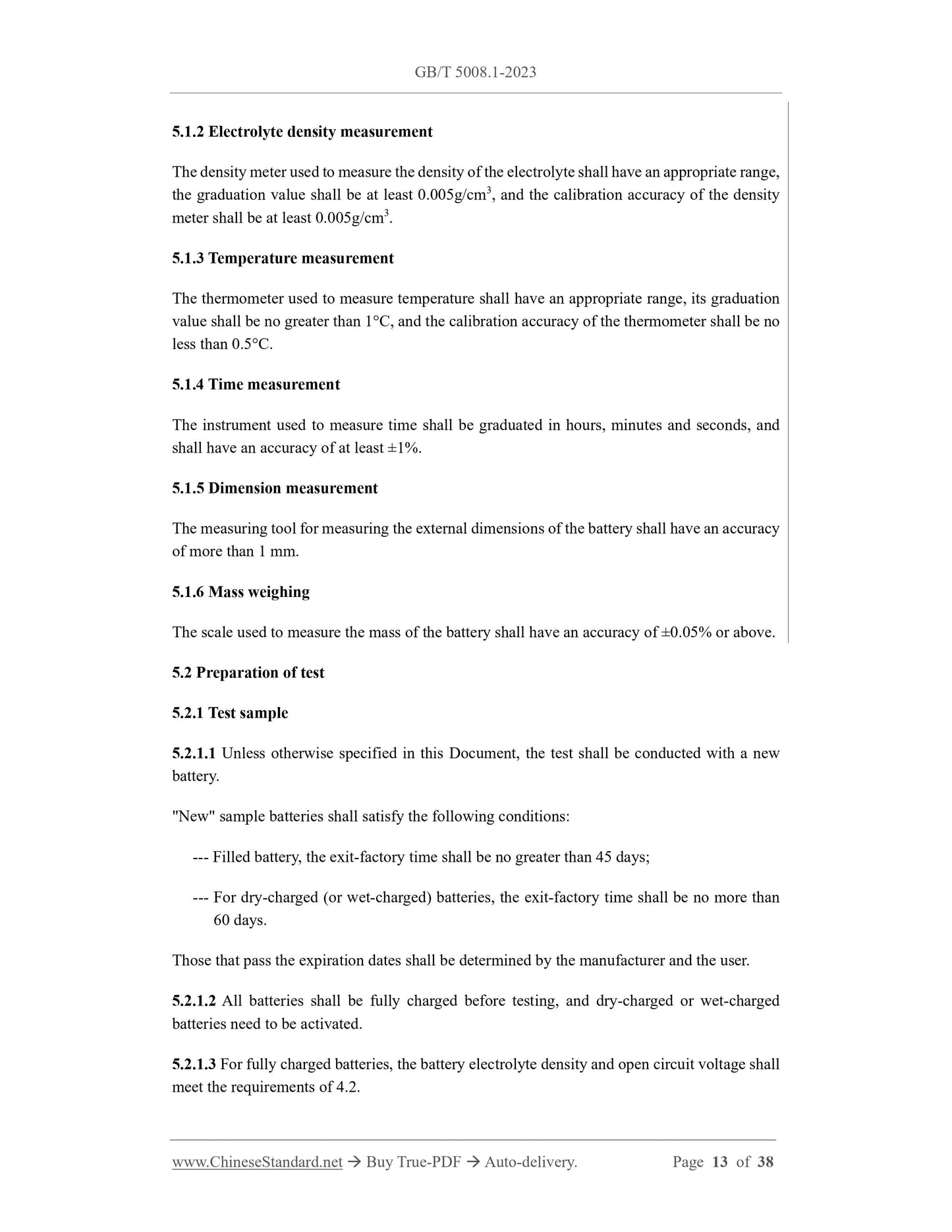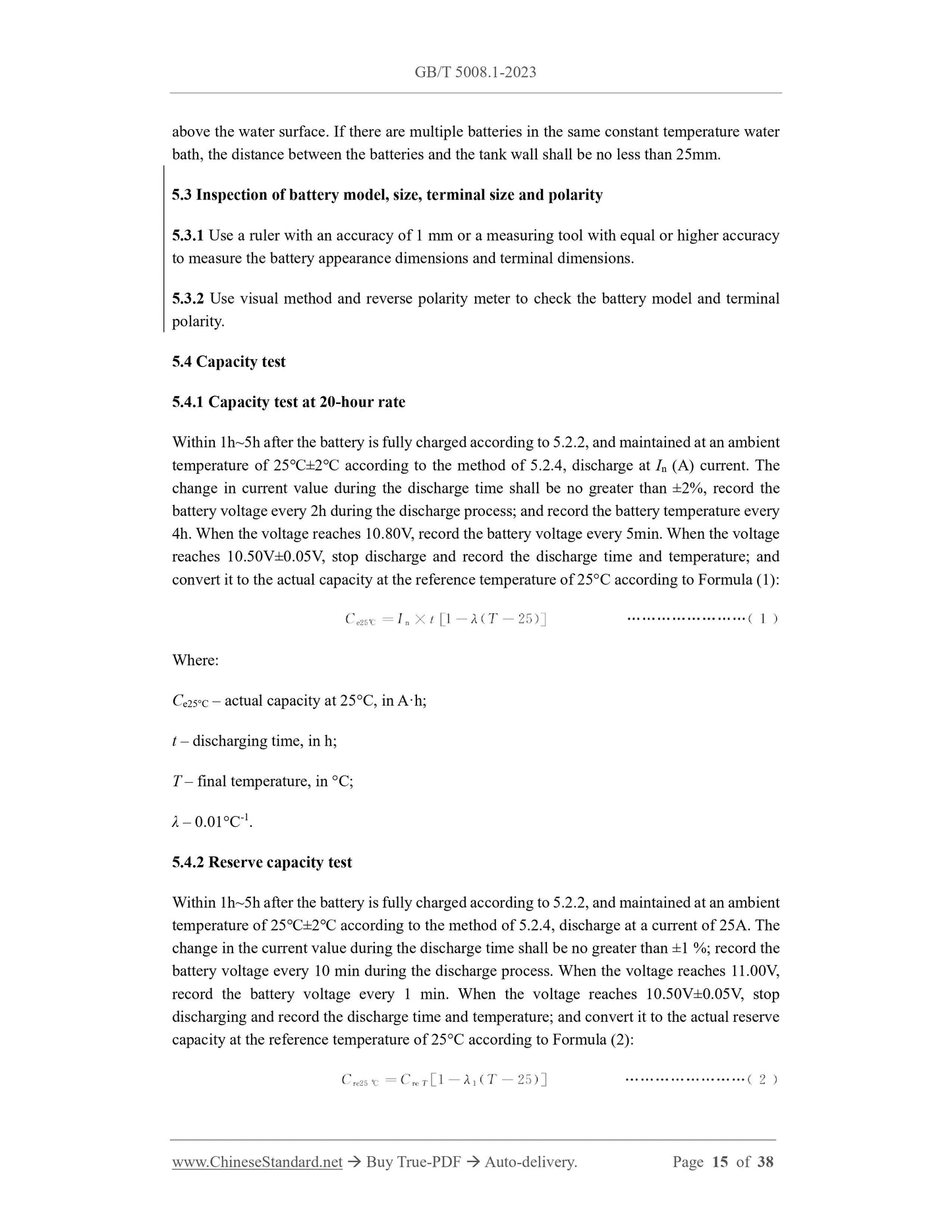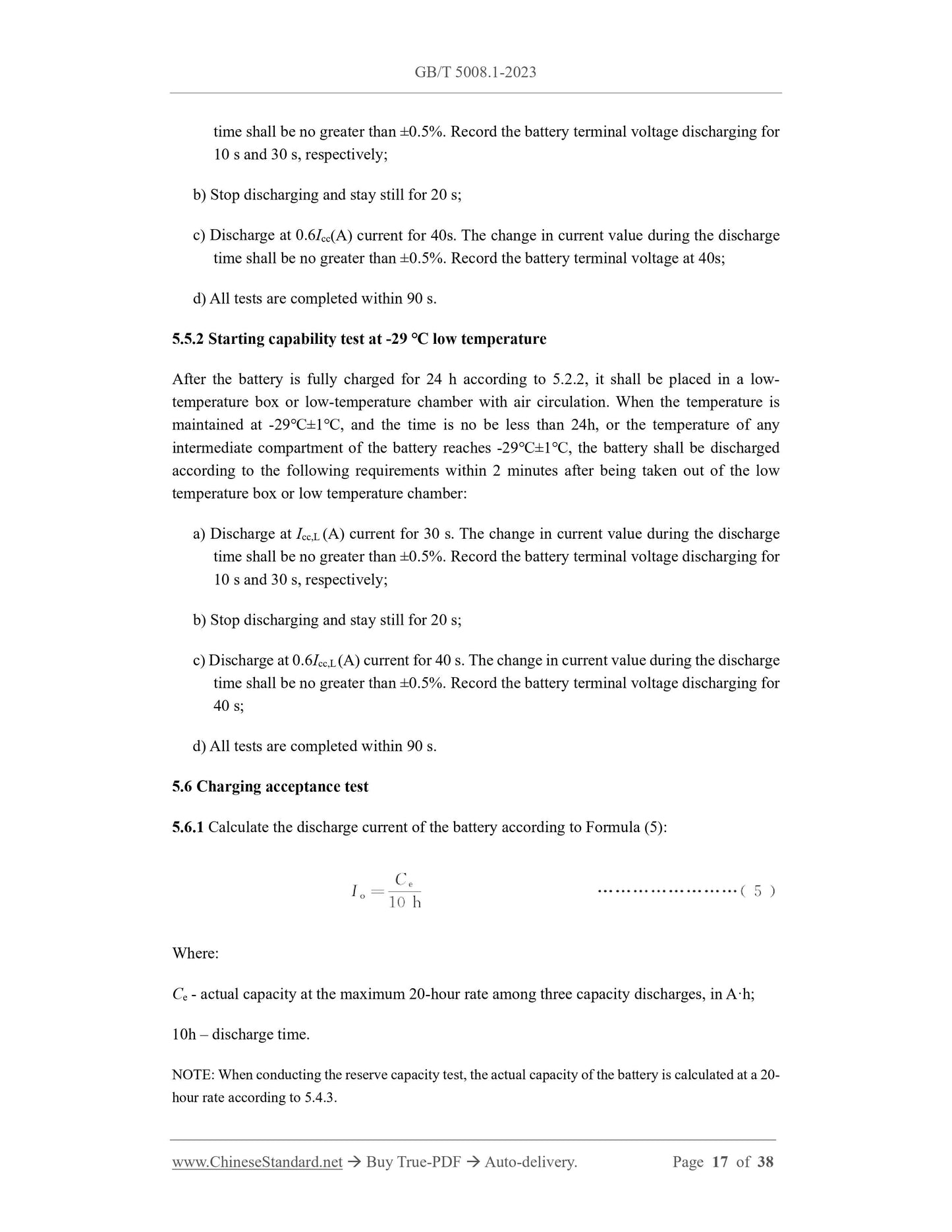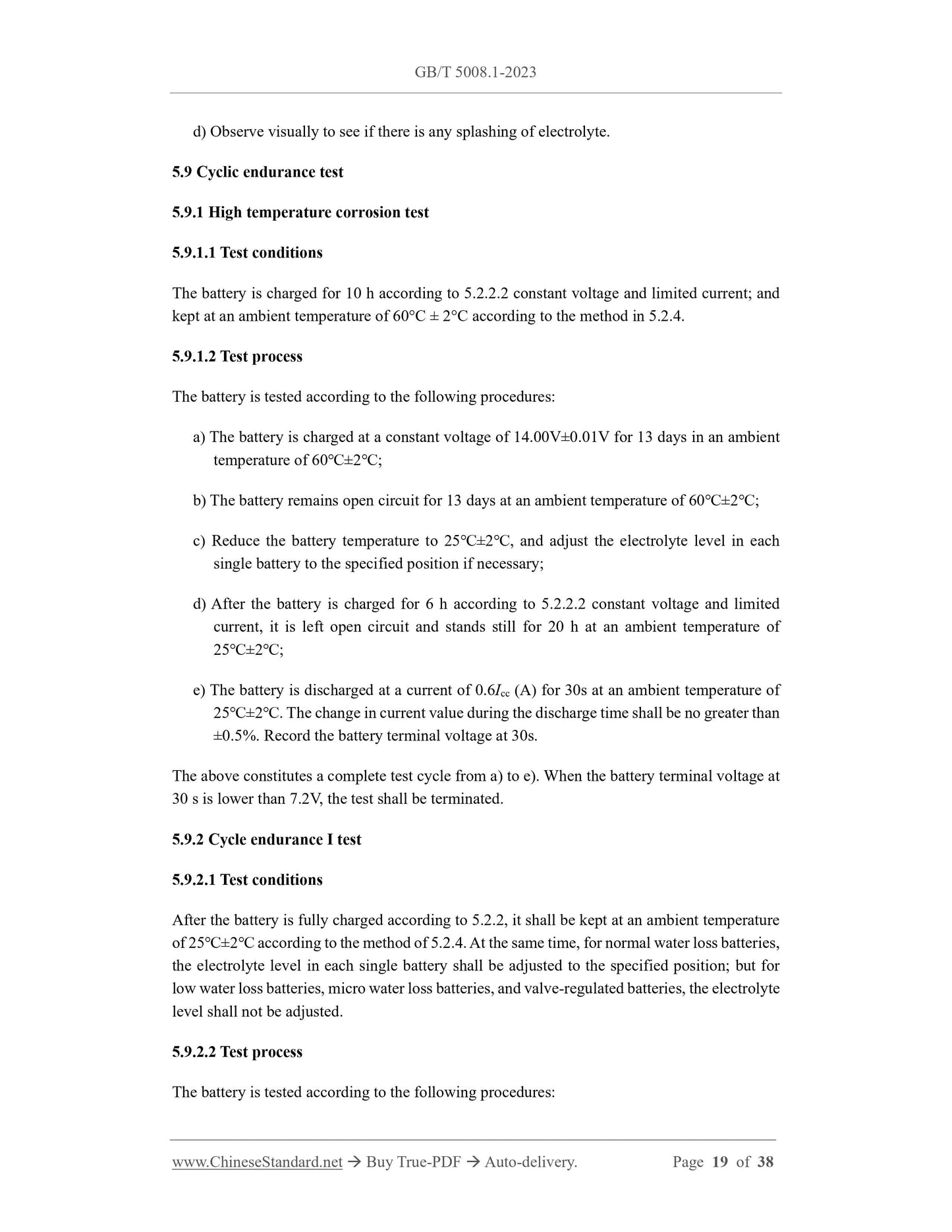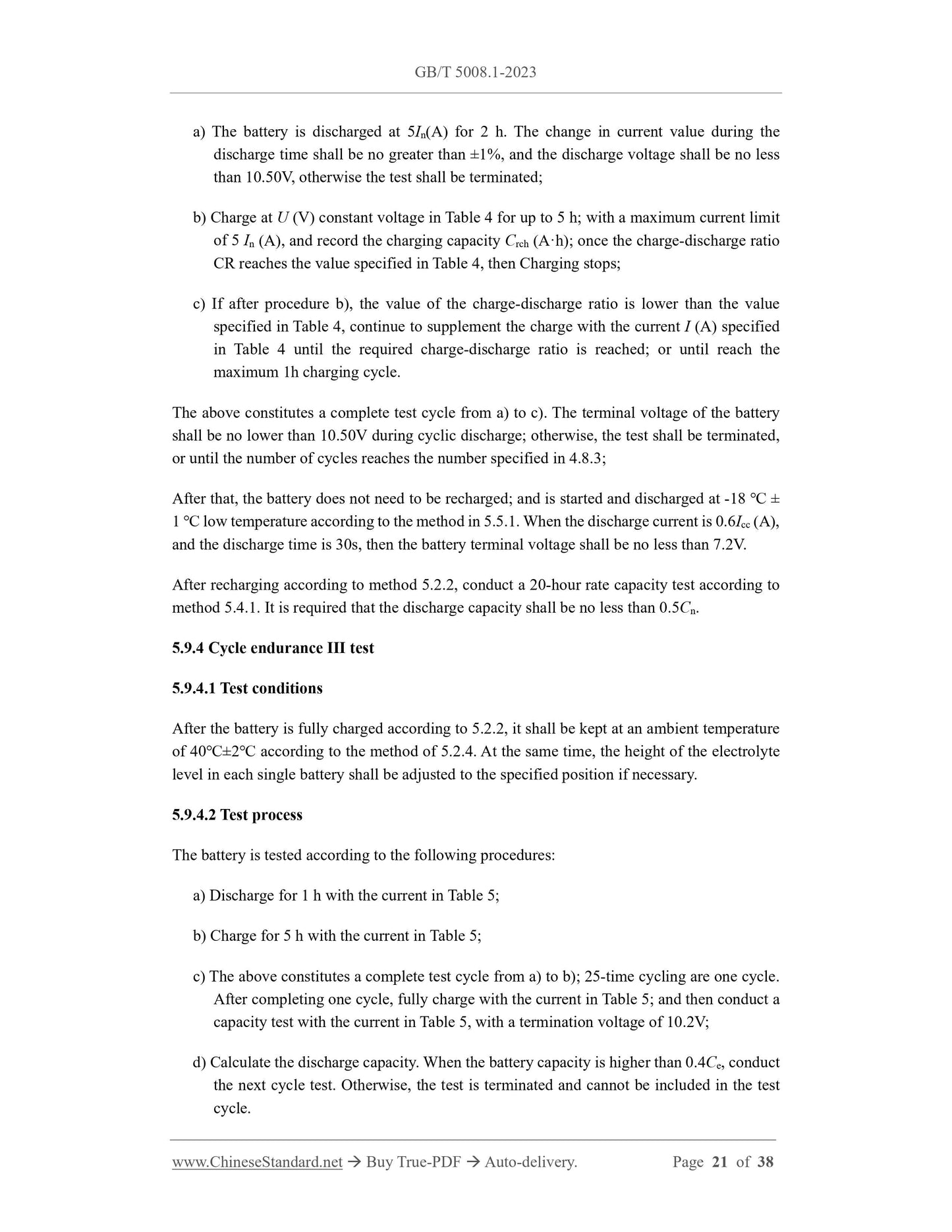1
/
of
12
www.ChineseStandard.us -- Field Test Asia Pte. Ltd.
GB/T 5008.1-2023 English PDF (GB/T5008.1-2023)
GB/T 5008.1-2023 English PDF (GB/T5008.1-2023)
Regular price
$440.00
Regular price
Sale price
$440.00
Unit price
/
per
Shipping calculated at checkout.
Couldn't load pickup availability
GB/T 5008.1-2023: Lead-acid starter batteries - Part 1: Technical conditions and methods of test
Delivery: 9 seconds. Download (and Email) true-PDF + Invoice.Get Quotation: Click GB/T 5008.1-2023 (Self-service in 1-minute)
Newer / historical versions: GB/T 5008.1-2023
Preview True-PDF
Scope
This Document specifies the classification, technical requirements, inspection rules andmarking, packaging, transportation and storage requirements of lead-acid starter batteries
(hereinafter referred to as batteries), and describes the corresponding test methods.
Basic Data
| Standard ID | GB/T 5008.1-2023 (GB/T5008.1-2023) |
| Description (Translated English) | Lead-acid starter batteries - Part 1: Technical conditions and methods of test |
| Sector / Industry | National Standard (Recommended) |
| Classification of Chinese Standard | K84 |
| Classification of International Standard | 29.220.20 |
| Word Count Estimation | 30,360 |
| Date of Issue | 2023-11-27 |
| Date of Implementation | 2024-06-01 |
| Older Standard (superseded by this standard) | GB/T 5008.1-2013 |
| Issuing agency(ies) | State Administration for Market Regulation, China National Standardization Administration |
Share
